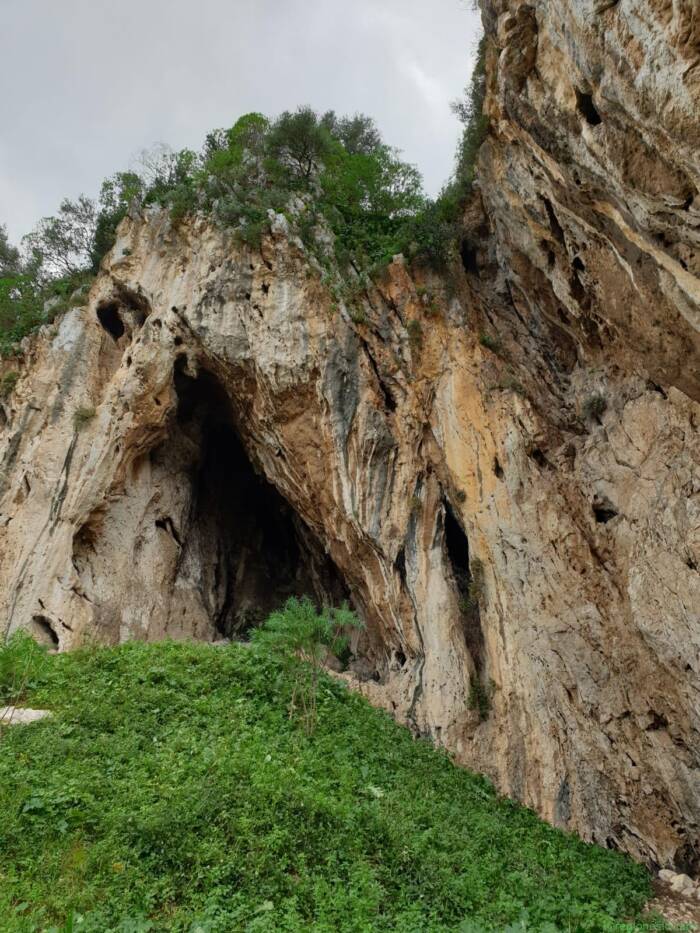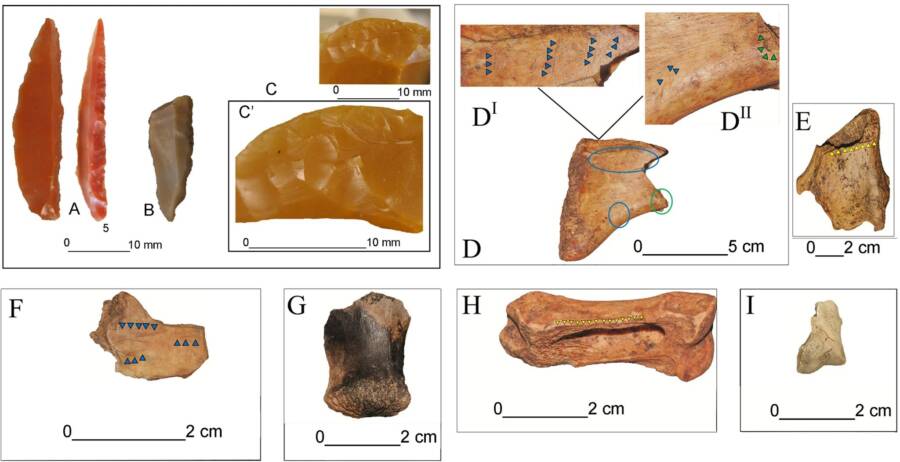New research at San Teodoro cave near the town of Acquedolci suggests that prehistoric humans arrived in Sicily by boat during the last Ice Age.

Forgia et al.San Teodoro Cave in Sicily, where early humans once settled.
San Teodoro cave in Sicily is one of the most important Pleistocene sites in the central Mediterranean. It’s been studied extensively over the years, with a special focus on a number of early human burials. But new research at the cave has revealed that humans settled in the cave — and in the larger Sicily region — much earlier than previously thought.
After excavating a deep layer of the cave, archaeologists determined that hunter-gatherers arrived in Sicily some 16,500 years ago, during the final years of the Ice Age.
The Earliest Known Human Settlers In Sicily

Archaeological Park of TindariThe entrance to San Teodoro cave, where the earliest inhabitants of Sicily settled some 16,500 years ago.
According to a study published in Archaeological and Anthropological Sciences, researchers had long suspected that San Teodoro cave held prehistoric secrets. In 1947, Italian archaeologist Paolo Graziosi postulated that while most attention had been paid to several human burials, the cave likely contained an even deeper section.
Graziosi suspected that this section of the cave, while overlooked, could hold evidence of earlier human occupation that predated the burials. He believed that it could have “implications for the understanding of the timing of the earliest occupation of San Teodoro, and by extension, all of Sicily.” Now, new research at San Teodoro has proven him right.
By using modern dating techniques to study a sediment layer where stone tools, animal bones, and charred wood were found, researchers have determined that the layer was 16,500 years old.

Forgia et al.A collection of the prehistoric tools that researchers found in San Teodoro cave.
“San Teodoro currently yields the earliest human presence in Sicily,” the researchers wrote. “The [16,500-year-old] dating is the oldest recorded so far.”
How Prehistoric People Settled In Sicily
As the researchers explained, these earlier settlers in Sicily likely departed from the Italian peninsula as the last Ice Age was coming to an end. Taking advantage of the low sea levels, they traveled from the mainland to Sicily by boat, and, based on layers of prehistoric ash, found a surprisingly forested environment at a time when much of Europe was covered by ice.
Finding Sicily to be a “glacial refuge,” these early humans settled in San Teodoro cave and survived as hunter-gatherers. They hunted large animals, especially deer. They cooked and ate the creatures’ meat, used their hides, and turned their bones into tools. They also collected flint and quartzite from nearby, which they turned into scrapers, points, and carving tools.

Archaeological Park of TindariInside of San Teodoro cave, which served as a shelter for prehistoric hunter-gatherers on Sicily some 16,500 years ago.
As such, the settlers to Sicily were advantageously located as the climate began to warm. Surrounded by maple, oak, and beech trees, as well as abundant wildlife, they were seemingly able to thrive on the island.
The discovery goes to show that even prehistoric sites that have been investigated before can offer up new findings. At San Teodoro cave, archaeologists have not only successfully excavated a deep layer, thus penetrating further into the cave’s early human past, but have also made a discovery that effectively rewrites the history of human settlement on Sicily — and in the greater Mediterranean region.
After reading about how prehistoric humans arrived in Sicily some 16,500 years ago, discover the fearsome stories of some of Earth’s most incredible prehistoric animals. Or, learn about the Megatherium, the extinct 13-foot sloth that once lived in the forests of the Amazon.





